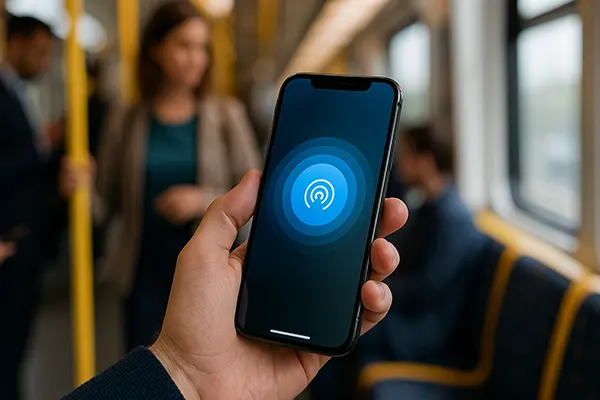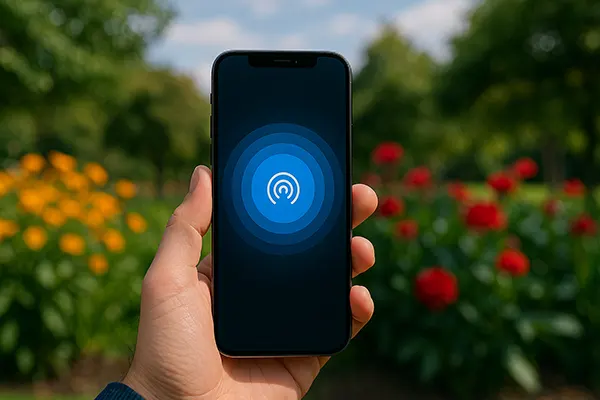What Apple Is Hiding: The Real Risks of Using AirDrop in Public Spaces

AirDrop is often considered a convenient feature for Apple users to share files instantly. However, behind its simplicity lies a complex set of privacy and security risks that many are unaware of. In public areas, where connections are often less secure and user awareness is lower, the dangers of using AirDrop increase dramatically. This article explores what Apple doesn’t disclose openly and what every iPhone, iPad, and Mac user should know before using AirDrop in shared environments.
AirDrop and Its Vulnerabilities
AirDrop uses Bluetooth and Wi-Fi to establish direct communication between Apple devices. While the process appears seamless, it exposes devices to risks when the setting is left open to “Everyone”. In public places like airports, parks, or trains, malicious actors can detect nearby devices and attempt unsolicited file transfers or snooping.
One of the most concerning vulnerabilities is the possibility of deanonymising a user’s phone number or email through AirDrop discovery. Researchers from Germany’s Technical University of Darmstadt demonstrated that the hash exchange used in AirDrop can be reversed using brute-force attacks, exposing the sender’s contact details.
Although Apple has implemented several encryption protocols to reduce risks, default user behaviour—leaving AirDrop set to “Everyone”—often undermines these protections. Without a user interface that clearly warns of threats or automatically limits exposure in unknown networks, many users unknowingly open themselves up to attacks.
Real-Life Incidents and Exploits
Over the years, there have been multiple reports of “cyber flashing,” where strangers use AirDrop to send obscene images to nearby iPhones. In 2022, several cases were recorded in New York’s subway system, raising public concern and legal discussions around digital harassment via wireless sharing tools.
In another case, security researchers mimicked an AirDrop device and triggered nearby phones to accept downloads. This showcased how even short proximity can be enough to exploit unprotected AirDrop sessions. Although Apple patched many of these exploits later, public knowledge about such incidents remains minimal.
Some attacks don’t require file transfers at all. Through AirDrop’s name broadcasting and handshake process, malicious actors can scan nearby devices, collect identifying information, and track users across locations. This opens the door to targeted phishing campaigns or physical stalking.
Apple’s Response and User Awareness
Apple has acknowledged some of the security flaws in AirDrop and responded with partial updates, such as limiting the “Everyone” setting to 10 minutes by default in iOS 16.2. However, this solution is not enabled on older devices or macOS, leaving a wide portion of users exposed.
Furthermore, Apple’s public documentation does not clearly warn about the social engineering and privacy threats associated with AirDrop. The responsibility is silently placed on users to change settings and understand the risks, despite the fact that the feature is enabled by default in many scenarios.
Security experts argue that Apple’s design choices prioritise convenience over transparency. A more responsible approach would involve opt-in permissions, real-time security alerts, and public education campaigns. Until then, users are left with a false sense of safety.
Steps to Reduce Exposure
Users should change their AirDrop settings to “Contacts Only” or disable it entirely when in public. To do this, navigate to Settings → General → AirDrop, and select the preferred mode. This reduces visibility to strangers and prevents unsolicited requests.
Another recommendation is to ensure your device name does not include personal information. Many users name their phones with their full name, which appears during the AirDrop handshake. Changing it to a neutral identifier limits exposure.
Lastly, updating to the latest iOS or macOS version is crucial. Apple often includes important security patches in these updates. While not all vulnerabilities are disclosed in public changelogs, staying current reduces the chances of being targeted through known exploits.

The Role of Digital Hygiene in Public Settings
Using wireless file-sharing tools like AirDrop in crowded or unfamiliar environments requires cautious digital hygiene. Users often underestimate the significance of device visibility and the type of data exposed through casual usage.
Just like securing a physical wallet, protecting digital endpoints should become second nature. Every shared file, device name, or accepted connection carries implications—both immediate and long-term. Awareness is the first layer of defence.
Parents, too, should pay attention to children’s AirDrop settings, especially in schools or during travel. Shared networks can be exploited more easily, and minors may not recognise suspicious requests. Educating younger users is an essential step toward more secure tech behaviour.
What Apple Should Do Next
Security analysts suggest that Apple should introduce automated modes that disable AirDrop in public networks by default, based on location or signal profiles. This would prevent misuse without limiting functionality for users who rely on AirDrop at home or work.
Additionally, a warning system similar to those used for suspicious Wi-Fi networks could be implemented. Users should receive real-time alerts if AirDrop is active and unfamiliar devices attempt to connect nearby.
Finally, transparency is key. Apple’s refusal to clearly document known vulnerabilities or provide user-friendly guides diminishes public trust. A proactive approach would help the brand maintain its reputation for privacy leadership.
